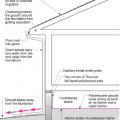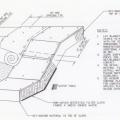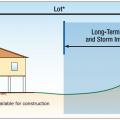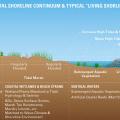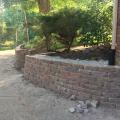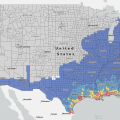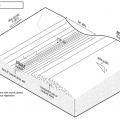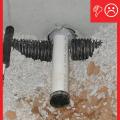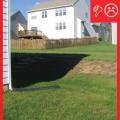Showing results 1 - 22 of 22
Comprehensive water management features include a capillary break (≥ 6-mil polyethylene sheeting) at all crawlspace floors
Dry wells are underground tanks that store water to percolate or drain slowly to another site or sewer.
Dune erosion caused by the combination of a hurricane and a nor’easter in Ocean City, New Jersey
Good water management practices like sloping grade away from house, and installing gutters, perimeter drain pipe, a capillary break, and free-draining soils or drainage mat protect the foundation from water saturation.
Installation of an erosion control blanket to minimize soil loss on sloped ground that has no established vegetation
On ocean-front lots set the home as far back on the lot as possible, preferably with a protective dune between structures and shoreline.
Planting deep-rooted native grasses and shrubs on the banks of shorelines can help reduce the effects of erosion on sandy slopes
Retaining walls can prevent erosion and landslides and maintain access to critical infrastructure
Right – The drain slopes away from the foundation and terminates at the proper distance
Soil types include sand, silt, and clay- the more sand, the more quickly the soil drains.
The pilings for this building are showing signs of failure due to a poor siting decision to locate the home too close to the surf.
This home was incorrectly sited and supported too near a slope consisting of unstable soils.
This swale and berm slow the flow of stormwater across a site to minimize erosion.
Wrong – Drain pipe has been cut and foundation penetration has not been properly sealed
